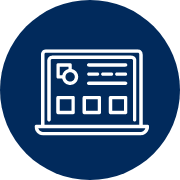WHAT IS IT?
Students apply design methods, principles and practices to a significant, open-ended design project. This type of experience typically involves the development of a design project from an initial concept to a final working prototype. These opportunities are not partnered, students engage with their course instructor and peers to complete their project.
IMPORTANT CONSIDERATIONS
Eligibility:
- Advanced design experiences have specific eligibility criteria that differ depending on the course or program of study to which they are connected.
Duration:
- Advanced design experiences can last from a few hours to a number of days or weeks over the course of an academic term. The timelines vary and will be set within the course.
Recognition and / or compensation:
- Advanced design experiences are unpaid opportunities, students receive academic credit as part of a course.
Accessibility:
- Inclusion in EL is achieved when an experience supports learning for all students. In keeping with the Ontario Human Rights Code, the University of Toronto has a commitment to an equitable learning environment for people with disabilities. It is important to engage in an interactive process to determine the optimal and most appropriate accommodations for individual students engaged in experiential learning.
- If a student requires an accommodation related to advanced design experience, they may wish to connect with one of the accessibility services offices at the University of Toronto. Staff at these offices will advise on disclosure of accommodation requirements as well as offering support through the process of determining and negotiating effective accommodations for your individual circumstances.
- Student support offices strive to create a safe and comfortable community where students have opportunities to discuss navigating barriers, find peer support and learn about various academic and social opportunities.
ADDITIONAL INFORMATION
- Review the Guidelines & Procedures page to further understand which partnership agreements, insurance and liability coverage and health and safety policies are applicable to advanced design experiences. The Experiential Learning Risk Management Matrix provides a one-page overview.
- Students engaging in an advanced design experience (for credit), receive workplace insurance coverage through the University or Ministry of Colleges and Universities.
- Students engaging in an advanced design experience (for credit) have general liability coverage through the University.
BENEFITS
- Students have the opportunity to integrate their theoretical learning through practical application.
- Advance design experiences allow students to take ownership as they take their design project through the multiple stages of development and gain a sense of accountability.
- Students receive supervised guidance over an extended period of time, leading to deeper learning and skill development.

